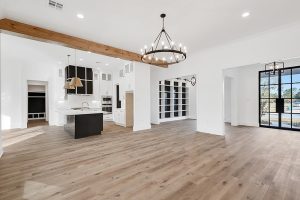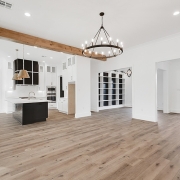Tips On Improving Your Indoor Air Quality
 When it comes to the air in your home, it has become more important now than ever in this day in age. The COVID-19 pandemic kept the country indoors and in their homes a lot within the past couple of years. In the past, air pollution has been focused on the outdoor air quality but with the past stay-in-door orders, this has also brought our home’s air quality into the equation.
When it comes to the air in your home, it has become more important now than ever in this day in age. The COVID-19 pandemic kept the country indoors and in their homes a lot within the past couple of years. In the past, air pollution has been focused on the outdoor air quality but with the past stay-in-door orders, this has also brought our home’s air quality into the equation.
Our indoor air quality can affect our health and our well-being. Bad indoor air quality leads to colds, the flu, asthma allergies, impaired sleep and concentration, sluggish productivity, mood disorders and health problems.
Professionals in the industry report that more than half of the homes in the country do not have correct ventilation which leads to poor indoor quality. Surprisingly, indoor air pollutants can be found in your home’s paint, furniture, carpets and cleaning products.
“Understanding the sources and, more importantly, controlling the causes behind common indoor pollutants can help to protect the health of your family, and one of your most important investments — your home,” says Scott Rasmussen, president of Quality Edge.
Below are some tips on how you can improve your indoor environment at home to help with indoor air quality.
Proper Ventilation Is Crucial for Clean Air
While your home does need to be weatherproofed, it still needs to be able to breathe. Proper ventilation is imperative for this and helps alleviate those indoor pollutants.
“Inadequate ventilation can increase indoor pollutant levels by not bringing in enough outdoor air to dilute emissions from indoor sources, and by not carrying indoor air pollutants out,” Rasmussen says. He adds that proper ventilation is crucial for clean air.
Your attic is one of the first places you should start. A home’s attic needs continuous ventilation. An attic with no airflow causes mold, growth, mildew and rot. Make sure the ventilation at the eave edge can bring fresh air in through the roof exhaust vents.
If this is a concern for you and your home, you might want to consider investing in a high-performance roof ventilation system. This kind of system will do its job well but is architectural pleasing to the eye and will not stand out and ruin your home’s curb appeal.
Extend the Life of Your Home
A new roof with an adequate roof ventilation system will help do this. As a homeowner, you will be able to avoid costly repairs due to mold, rotten wood or odor buildup with this system.
Another way to extend the life of your home is to add vented soffit products that will not only help with the health of your home but will add to your home’s curb appeal. These products do this by elevating the look of your house’s exterior.
“Replacing your soffit also presents a great opportunity to update your home’s trim colors,” Rasmussen says.
Prevent Leaks
A home’s exterior siding can prevent water leaks. These leaks will seep into your home’s interior causing moisture damage and mold. Professionals suggest a moisture-wicking siding should be used on a new home or added to a remodel.
If you cannot afford to replace your current siding, then a regular maintenance check-up is suggested. Look for cracks that can be scaled up to help prevent any water leaks.
Other Steps to Take
There are many simple things you can do to your existing home that will help with air quality. Make sure to clean and dust regularly which will minimize indoor air pollutants. Also regularly check your HVAC system and replace their filters several times a year.
Remember the quality of the air in your home does not only affect those that live in the house but extends the health and life of the home itself. “High temperature and humidity levels in your attic spaces due to inadequate ventilation can increase your energy costs, reduce the effectiveness of your home’s insulation, cause premature aging of your home’s building materials and void your home’s roof warranty,” Rasmussen says.



